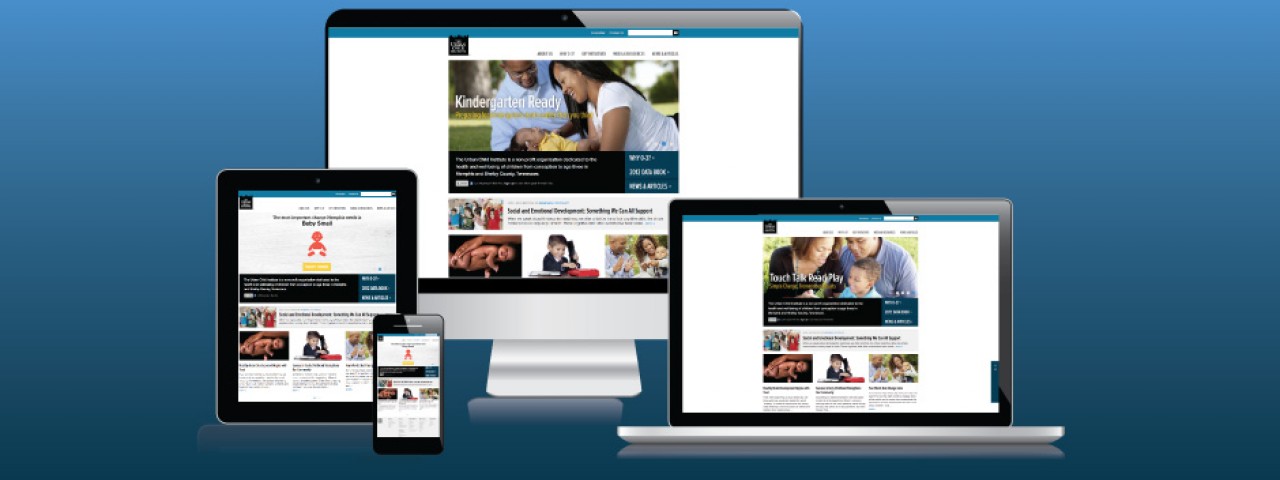Using Technology to Share Our Message
- Tweet

The Urban Child Institute's message—that brain development in children ages 0-3 is critical—is straightforward. It's the dissemination of this message that gets more complicated. Enter the Technology Department.
Made up of three people, the department is responsible not only for righting the technical snags throughout the office, but for communicating the vision and goal of that office. Such a task requires a comprehensive strategy.
"It's the three-legged stool approach: web, email, and social media" says Scott Wilson, Director of Technology and Special Projects at the Institute. "And while we use all three mediums, each is based on the web content."
Monthly emails, for example, are sent to subscribers, informing them of new web content, which includes anything from articles about the effects of fetal alcohol syndrome, to editorial illustrations and resources, such as a parents' guide to kindergarten readiness.
"The website is a major way we're communicating with people outside of the organization," says Matt Cowgur, one of two "technologists" for the Institute. "I help facilitate that communication by ensuring the website is running as well as it can and that the technology behind it gets out of the way of people consuming the information we communicate."
However, the website isn't necessarily ideal for reaching all audiences. To extend the reach, social media plays a role, including Facebook, Twitter, and even Pinterest.
"The appeal of Pinterest is that it is a visual medium for women 25-49," says Wilson, "which is right in the wheelhouse of who we're trying to get messages to."
These messages vary, but include examples of activities parents can do for free or relatively cheap to stimulate their children's brain development, as well as curriculums and nutrition information. Tweets too communicate these ideas, which range a broad spectrum.
"A lot of times I'm writing things like 'Hey, have you taken your kids to the park lately?'" says Jason Ziegler, responsible for the Institute's social media. "Or I'll point out a research article that says that playing with a cardboard box is better for your child than playing with an iPad."
And although parks and cardboard may seem simplistic, these suggestions can significantly help parents raising young children.
"A lot of times when people aren't interacting with their kids, it's because they don't know how—they haven't had anyone teach them," says Wilson. "They don't know what it looks like to touch their child, talk to their child, play with their child, read to their child. We want to give people ideas and information for different ways they can do this."
While integral, computer screens aren't the only ones employed in this task. Last fall for example, the "Baby Small" campaign launched, promoting the importance of a young child's brain development. The online animation, envisioned by the technology department, was featured first on the website and later adapted for a television commercial. The finished product won an award from the Memphis chapter of the American Advertising Federation.
"I'm really proud of that campaign, not just because it won an ADDY," says Wilson, "but because it was our first attempt at a coordinated media strategy where we had a web product, a television broadcast product, newspaper articles, and an intense social media campaign that surrounded it. It's probably the biggest communication effort we've undertaken in our organization and it went very well."
Even so, the Institute is always looking for more ways to effectively communicate its message. One of its latest efforts is a coloring book that reinforces the importance of "Touch, Talk, Read, Play," and includes other activities, such as matching games, that stimulate brain development.
Other projects in the works include an improved layout for the website and for the Data Book, which is an annual compilation of information and statistics regarding the state of children in Memphis and Shelby County. By making this book available for Kindle, in iBooks, in a searchable HTML format, and in hard copies, the Institute hopes to reach as many people as possible, in as many ways as possible. This, in essence, is how the department best supports the mission of the Institute.
"I see technology as a translational mechanism for the research," says Wilson. "Not everybody is an academic or a PhD, so we seek to translate those messages into something the general public can actually do something with."
